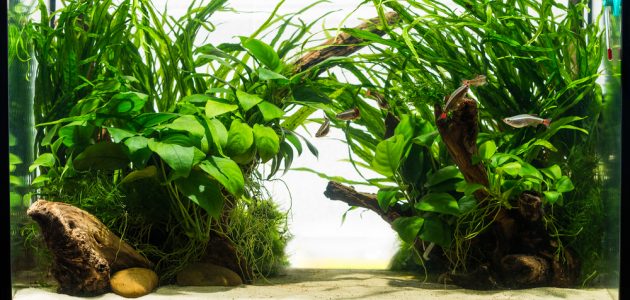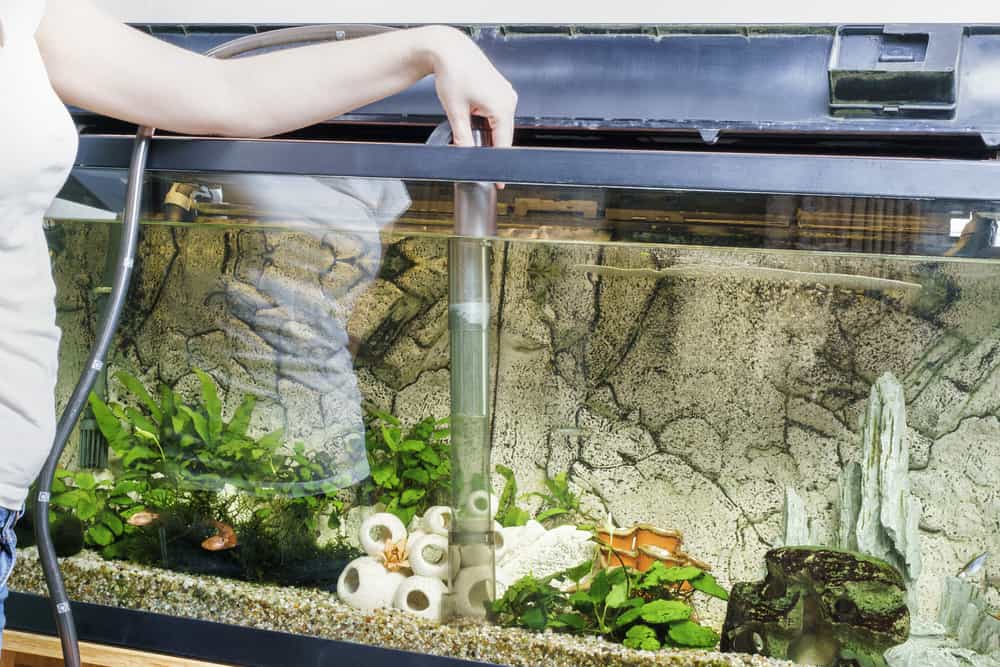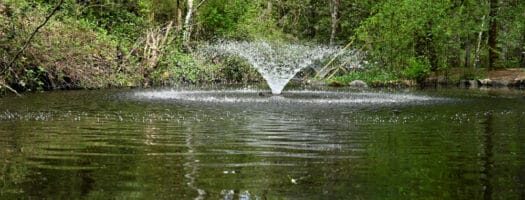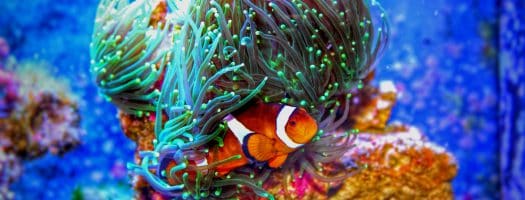The Easiest Ways to Clean Aquarium Sand

Fish are wonderful to have as pets. They will never scratch the sofa, be noisy in the middle of the night, or require constant attention. Their very presence has a calming effect and they are a great choice of pet for people who have allergies. It’s no wonder, then, that they are the pet of choice for millions of people.
To properly care for a fish as a pet, it is important to learn how to give them the best environment. A tank with clean water, plants, and substrate similar to their natural habitat will help these beautiful pets avoid disease and have long lives.
Methods for Cleaning Aquarium Sand
We’ll look at sand as a substrate and the importance of getting the right one later. First, let’s look over the main methods for cleaning your aquarium and then give you some top tips. In general, you can clean your aquarium by hand, buy a device to help you clean it, or build cleaning into the system of the device itself.
Before You Clean
Before you start cleaning. There are a few things you should first.
- Remove the decorations in your tank. Make sure to put them in a clean bucket so they don’t pick up bacteria they then reintroduce to the aquarium again after.
- Siphon 20-25% of the water. You’ll be changing water regularly as part of your cycle. You can also add a few drops of water conditioner to your replacement water. Add the replacement water after you clean.
Then, you have the following options:
Cleaning by Hand
Most of what needs to be removed from the bottom of an aquarium sits on the very surface of the sand. Disturbing this layer allows the water filtration system to remove much of the waste that floats up.
There are many cheap rakes and spatulas that can help with this process, but they don’t do the job much better than your fingers.
It is important to avoid causing clouds of dust when manually cleaning, as it may have adverse effects on some fish. Raking too deep into the sand may also unintentionally remove helpful bacteria from the ecosystem.
Simply running your fingers across the top layer is enough to dislodge much of the dirt and waste without disturbing too much of the remaining substrate.
While the cheapest option, cleaning by hand is considered to be the least effective and carries the biggest risk of harm to fish.
Gravel Vacuums
The most effective way to clean the sand in an aquarium is to use a gravel vacuum (sometimes called a “siphon”). These devices use gravity to suck sand into a pipe that tumbles the sand, knocking the detritus off. The clean sand then falls away as the dirty water travels through a hose to a bucket or bowl below.
Using a gravel vacuum requires the careful movement of the nozzle over the surface of the substrate, moving back and forth across the tank, from edge to edge. Hold it about 0.5” above the sand as you do so.
It is often easy to miss an area of the tank, so it is recommended this is done twice. Some siphons have tapered nozzles, which make it easier to get into the small corners: being careful not to suck up a curious fish.
Gravel vacuums are designed to completely remove dirty water from the aquarium, and the tank will lose approximately twenty percent of its capacity during cleaning. This can sometimes be a messy process as the removed water must then be disposed of.
Replacing aquarium water must be done carefully, using proper guidelines for chemistry and temperature, to ensure the health and safety of the fish. However, there are options that allow the same aquarium water to be used while still providing a thorough clean of the sand being vacuumed.

Powered Systems
A powered version of the gravel vacuum does exist, relying on a water pump and internal filter which cleans the water before it returns to the tank. This lowers the stress the fish may experience from introducing new water and offers more powerful suction for the vacuum.
Powered systems can be expensive and the internal filters require replacing often. As a middle ground, many of today’s gravel siphons include connections to link to the most common water filters on the market, allowing an ad hoc powered system to be created.
However, this will still require a filter replacement and relies on the quality of the aquarium’s water filtration system.
Battery-Powered Cleaners
Battery-powered cleaners are a compromise between the gravel vacuums that remove water and the systems that involve complex filters. These hand-held siphons capture the debris in a “sock” that allows water to be delivered back into the aquarium.
Portable and light-weight, these systems are inexpensive compared to large filters. Innovative aquarium owners have even found ways to use old nylon stockings as replacement “socks.”
While useful for light work, battery-powered cleaners often fail to lift as much sand or substrate from the surface of the aquarium as is required for proper maintenance. However, some offer an option to be connected to a water pump and provide the same quality work as a regular gravel vacuum.
Undergravel Filtration Systems
An undergravel filter is a system that sits under the sand in the aquarium, drawing the detritus on the surface of the sand bed to the bottom layer before filtering the water and releasing it at the top of the tank.
Undergravel systems are constantly-running, can replace the need for other water filtration systems and can cover the entire bottom of the tank. This larger surface area allows for more complete and thorough cleaning.
Undergravel systems have the benefit of increasing the time between tank cleans and not disturbing the environment of the fish. Using the highest-quality systems can save the need to perform a thorough clean for any more than once a year. Filters are easy to replace and mechanical maintenance is very rarely required.
An unchecked undergravel filtration system can be dangerous as an undiscovered failure produces the same result as an aquarium that isn’t cleaned at all. They are not as effective with sand substrate as with gravel.
Top Tips for Cleaning Aquarium Sand
- Whether it is using the nozzle of a siphon or simply a clean finger, only the top layer of sand should be disturbed.
- Ensure all areas of the base are covered by moving back and forth in horizontal lines. Then repeat this process using vertical lines. This overlapping will guarantee no debris has been missed.
- After cleaning the base of the aquarium, wait one hour before changing the filter on the system. This gives it time to pick up anything still floating.
- Cleaning aquarium substrate should be done at least once a month, regardless of the presence of burrowers or your use of gravel. Replacing the substrate must occur yearly.
Or, Let the Fish Do the Work
Sometimes the best way to approach a problem is by looking at how mother nature solves it. In the case of cleaning the bottom of an aquarium, it is no surprise that part of the answer involves other aquatic animals.
The Corydoras Catfish eats by pushing about sand in the search for food, which causes a natural stirring up of the dirt and debris that requires filtering. Being diurnal, they will also be awake to finish off any food others do not eat, leaving no chance for food to settle long at the bottom of the tank. This is why they are the most popular choice among many fish enthusiasts.
The Malaysian Trumpet Snail, which is comfortable in both fresh and salt-water, is also a burrower. It digs through even the bottom layers of the sand, helping turn it over. Considered by some as a pest, it can often appear unexpectedly after plants have been added to new aquariums.
In both these examples, it is important to consider how the introduction of the animal will affect other fish and aquarium environments. Catfish are not suitable for cohabitation with cichlids or crayfish, while the Trumpet Snail’s short life span may not be enjoyed by younger owners.
Sand as a Substrate
Substrate is the material used at the bottom of an aquarium. Experts recommend two to five centimeters of substrate, regardless of the creatures kept. The material chosen can affect water chemistry, filtration and the stress levels of the tank’s inhabitants.
The most common substrate used by aquarium owners is ordinary play sand. This is for good reason. Sand is the natural substrate for fish in the wild. It is also inexpensive and easy to clean.
For many fish, it is a vital addition to their environment; something they would normally consume for good gut health and something they can comfortably burrow into without causing damage to themselves.
It is inevitable for dirt and waste to accumulate on the bottom of any aquarium. This causes changes to the chemistry of the water, invites algae growth, and creates health issues for the fish. By keeping the sand substrate clean, an aquarium owner can ensure a happy environment for their pets and a more beautiful and enjoyable view for themselves.
Considering Alternative Substrates
While ordinary recreational play sand is often the best option for aquarium owners, there are several alternatives available that may be suitable in the correct circumstances. Each substrate has its cleaning and maintenance challenges, but the method for doing so is the same.
Common alternative substrates include:
- Silver Sand – similar to the sand found in the bottom of rivers and lakes around the world, it is perfect for burrowers, is chemically inert and promotes plant growth. Being finer, it can get caught in some filters, or cause “sand clouds” under manual cleaning.
- Natural Gravel – easier to clean and allows for more aeration. It isn’t suitable for burrowers and plants that require roots. Note, it can harm catfish.
- High-Cost Planting Substrates – specially designed “sand” that is preloaded with nutrients and food for fish and plants, it appears dirtier and requires a high-end filtration system to ensure water quality.
Final Thoughts
It is natural to worry that you are neglecting your pets if you are not buying the most expensive sand or the most complicated cleaning devices. What matters more than anything else is that the fish live in an aquarium that is cleaned regularly and in a way that causes the minimum amount of stress. A simple gravel vacuum and the introduction of appropriate species to a play sand substrate is perfect for almost all situations.



